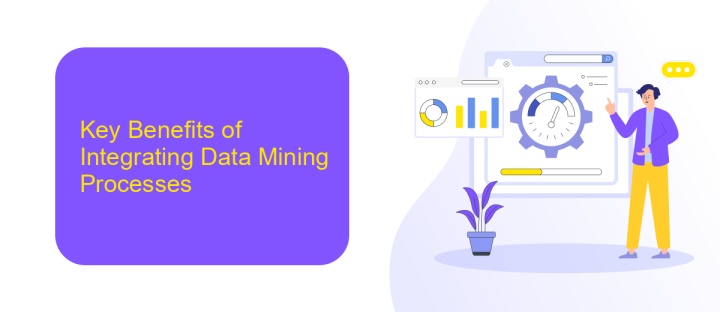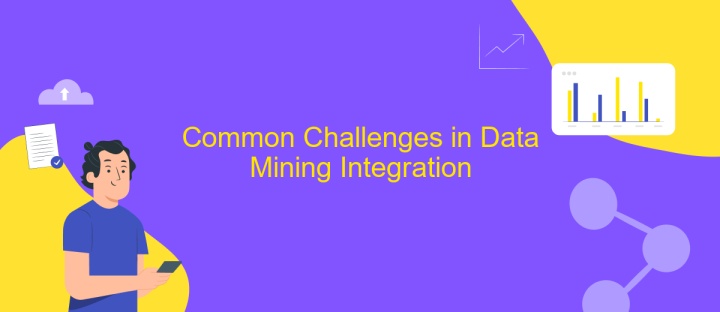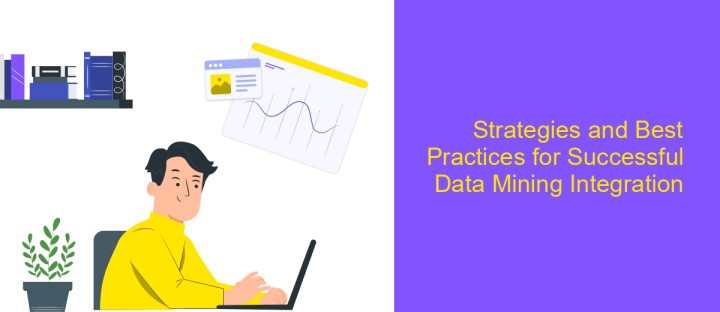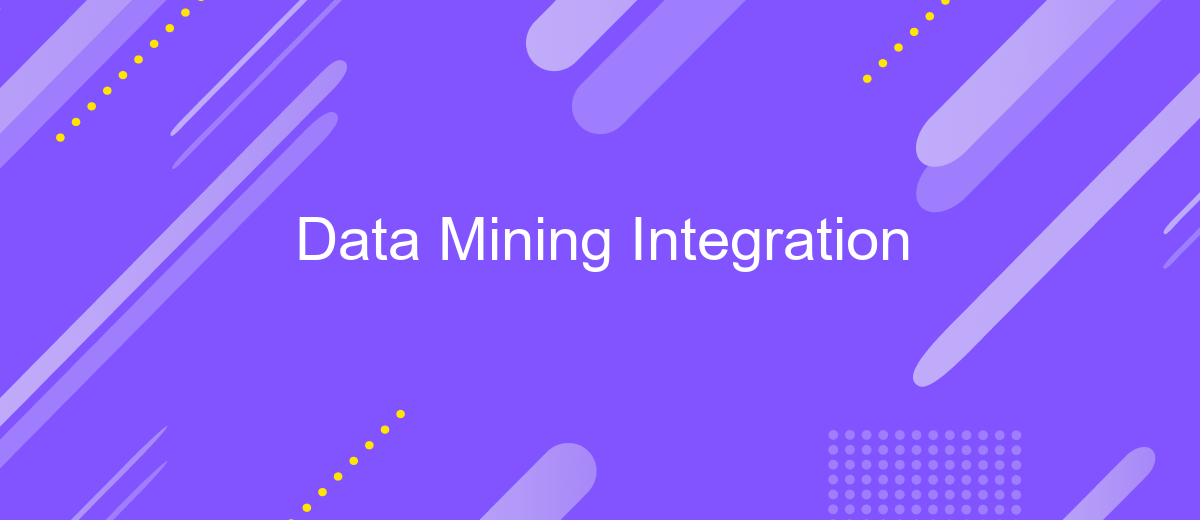Data Mining Integration
Data mining integration involves the seamless incorporation of data mining techniques into existing business processes and systems to enhance decision-making and operational efficiency. By extracting valuable insights from vast datasets, organizations can uncover hidden patterns, predict future trends, and optimize strategies. This integration not only improves data-driven decision-making but also fosters innovation, allowing businesses to maintain a competitive edge in an increasingly data-centric world.
Introduction to Data Mining and its Integration Needs
Data mining, a crucial component of modern data analysis, involves extracting valuable insights and patterns from large datasets. As organizations increasingly rely on data-driven decision-making, the need for efficient data mining processes has grown. This discipline encompasses various techniques, including clustering, classification, and association rule learning, to transform raw data into meaningful information. However, the integration of data mining into existing systems presents several challenges that must be addressed to maximize its potential.
- Data heterogeneity: Combining diverse data sources with different formats and structures.
- Scalability: Handling massive datasets efficiently without compromising performance.
- Real-time processing: Ensuring timely analysis and insights for dynamic environments.
- Data quality: Maintaining accuracy and consistency across integrated systems.
- Interoperability: Ensuring seamless communication between disparate systems and tools.
Addressing these integration needs is essential for organizations seeking to leverage data mining effectively. By overcoming these challenges, businesses can enhance their analytical capabilities, improve decision-making processes, and gain a competitive edge. As technology evolves, the demand for robust data mining integration solutions will continue to rise, underscoring the importance of developing innovative approaches to meet these needs.
Key Benefits of Integrating Data Mining Processes

Integrating data mining processes offers numerous advantages that can significantly enhance business operations. One of the primary benefits is the ability to uncover hidden patterns and insights from vast datasets, enabling more informed decision-making. By integrating data mining with existing systems, organizations can streamline workflows, reduce redundancy, and improve data accuracy. This integration facilitates real-time data analysis, allowing businesses to respond swiftly to market changes and customer needs, ultimately leading to a competitive edge.
Moreover, tools like ApiX-Drive can simplify the integration process, eliminating the need for complex coding and manual data handling. ApiX-Drive provides seamless connectivity between various data sources and applications, ensuring that data mining processes are efficiently embedded into business operations. This not only saves time but also reduces the risk of errors, as data is automatically synchronized across platforms. By leveraging such services, companies can maximize the potential of their data mining efforts, driving innovation and fostering growth in an increasingly data-driven world.
Common Challenges in Data Mining Integration

Integrating data mining processes into existing systems presents several challenges that organizations must navigate to achieve successful outcomes. These challenges often stem from the complexity of aligning diverse data sources, technologies, and business objectives. As companies strive to leverage data mining for actionable insights, they encounter various obstacles that can hinder integration efforts.
- Data Compatibility: Ensuring that data from different sources is compatible and can be seamlessly integrated is a significant hurdle.
- Scalability Issues: As data volumes grow, maintaining the scalability of data mining processes becomes increasingly difficult.
- Security Concerns: Protecting sensitive data during integration and mining processes is crucial to prevent breaches and maintain compliance.
- Technical Expertise: The need for skilled personnel to manage and optimize integration processes can strain resources.
- Cost Management: Balancing the costs associated with data mining integration without compromising quality is a persistent challenge.
Addressing these challenges requires a strategic approach that involves careful planning, investment in robust technologies, and fostering collaboration between IT and business teams. By understanding and mitigating these common issues, organizations can enhance their data mining capabilities and drive more informed decision-making processes.
Strategies and Best Practices for Successful Data Mining Integration

Integrating data mining effectively into business processes requires a strategic approach to ensure it aligns with organizational goals. The first step is to clearly define the objectives of data mining projects, ensuring they are in sync with the overall business strategy. This alignment helps in prioritizing projects that offer the most value.
Next, it is crucial to establish a robust data infrastructure. This includes ensuring data quality, consistency, and accessibility. A solid infrastructure acts as the backbone for successful data mining, allowing for accurate and efficient analysis. Additionally, fostering a data-driven culture within the organization can significantly enhance the integration process.
- Invest in training and development for staff to improve data literacy.
- Implement scalable and flexible data mining tools.
- Regularly evaluate and refine data mining processes.
- Ensure compliance with data governance and privacy regulations.
Finally, continuous monitoring and feedback loops are essential. They allow organizations to adapt to changes and refine their data mining strategies over time. By following these best practices, businesses can leverage data mining to gain valuable insights and drive informed decision-making.


Future Trends and Conclusion
As the field of data mining integration continues to evolve, future trends are expected to focus on enhancing automation and improving interoperability between diverse systems. The growing need for real-time data processing will drive the development of more sophisticated integration tools that can seamlessly connect various data sources. Services like ApiX-Drive are at the forefront of this evolution, offering solutions that simplify the process of integrating disparate systems. By providing user-friendly interfaces and robust automation capabilities, such platforms enable businesses to harness the power of data more effectively, paving the way for smarter decision-making and increased operational efficiency.
In conclusion, the future of data mining integration lies in the ability to adapt to rapidly changing technological landscapes. As organizations strive to become more data-driven, the demand for flexible, scalable, and efficient integration solutions will only increase. Emphasizing collaboration between developers, data scientists, and business stakeholders will be crucial in driving innovation in this space. By leveraging advanced integration services like ApiX-Drive, businesses can ensure they remain competitive, agile, and well-equipped to meet the challenges of tomorrow's data-driven world.
FAQ
What is Data Mining Integration?
How does Data Mining Integration benefit businesses?
What are the key challenges in Data Mining Integration?
How can businesses automate Data Mining Integration processes?
What are the best practices for successful Data Mining Integration?
Routine tasks take a lot of time from employees? Do they burn out, do not have enough working day for the main duties and important things? Do you understand that the only way out of this situation in modern realities is automation? Try Apix-Drive for free and make sure that the online connector in 5 minutes of setting up integration will remove a significant part of the routine from your life and free up time for you and your employees.

